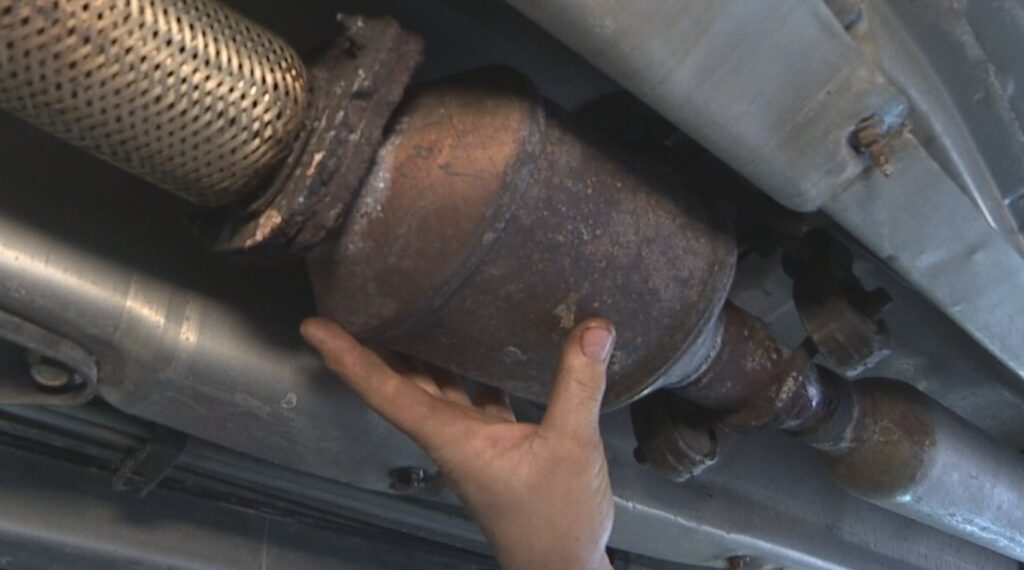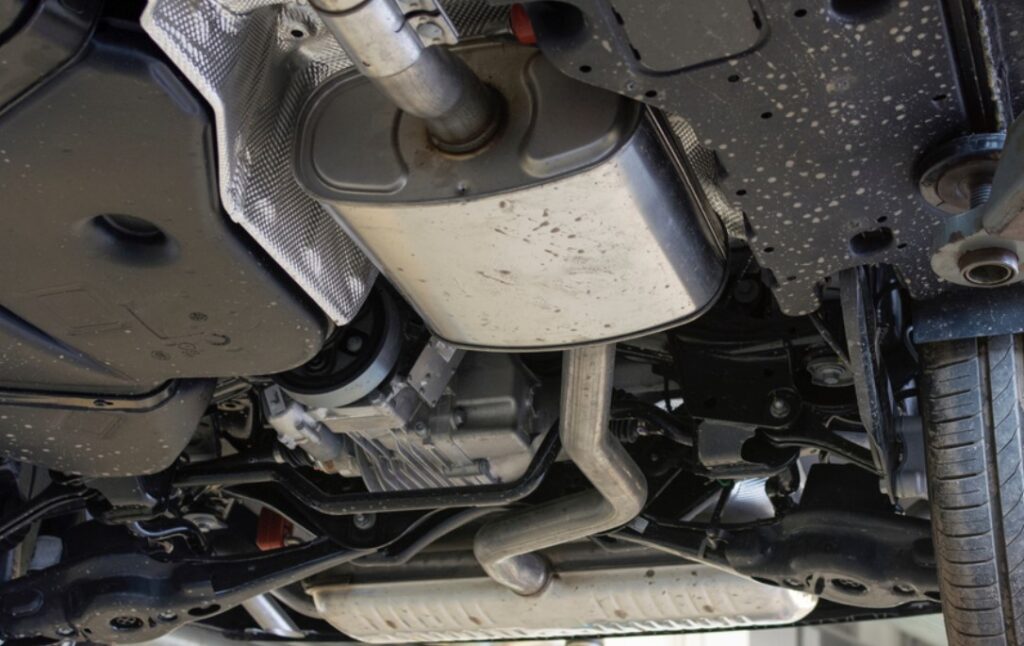How Many Catalytic Converters Does A Nissan Armada Have?
Are you looking for How Many Catalytic Converters Does A Nissan Armada Have? The Nissan Armada, a robust and reliable SUV, is designed with a comprehensive exhaust system that includes multiple catalytic converters. These converters play a pivotal role in controlling emissions, ensuring that the vehicle meets environmental standards. The Armada’s V8 engine is paired with these converters to efficiently manage the exhaust output.
Key Takeaways
- The Nissan Armada has a total of four catalytic converters.
- Two primary converters are integrated with the manifolds, and two secondary converters are located in the “B” pipes.
- The primary catalytic converters are more challenging to replace due to their integration with the exhaust manifolds.
- Secondary catalytic converters can be replaced relatively quickly, typically within an hour.
How Many Catalytic Converters Does A Nissan Armada Have?
A Nissan Armada typically has four catalytic converters. This setup usually includes two primary converters that are part of the exhaust manifolds and two secondary converters located further along the exhaust system.

Detailed Overview of the Nissan Armada’s Catalytic Converters
The Armada’s exhaust system is designed for optimal emission control. The four catalytic converters are strategically placed to ensure maximum efficiency.
The primary converters are more labor-intensive to replace due to their welded connection to the exhaust manifolds. On the other hand, the secondary converters are more accessible, making them easier and quicker to service.
Primary Catalytic Converters
The primary catalytic converters of the Nissan Armada are an integral part of the vehicle’s exhaust manifolds. These converters bear the brunt of the emission control task, treating exhaust gases as they exit the engine.
Due to their location and integration with the manifolds, replacing them is a significant undertaking that can take several days.
Secondary Catalytic Converters
Located in the “B” pipes, the secondary catalytic converters are easier to access and replace. These converters further treat the exhaust gases after they have passed through the primary converters. Servicing these parts is usually a quicker job, often completed within an hour, making it less of a hassle for Armada owners.
Importance of Catalytic Converters in Emission Control
Catalytic converters are vital in reducing the environmental impact of a vehicle. They convert harmful pollutants into less harmful emissions before they are released into the atmosphere.
For the Nissan Armada, having four converters ensures that it remains an environmentally responsible choice without compromising on power and performance.

The Role of Primary and Secondary Converters
Each set of converters in the Armada’s exhaust system has a distinct role. The primary converters handle the initial wave of exhaust gases, breaking down the most significant pollutants.
The secondary converters fine-tune this process, further reducing emissions and ensuring compliance with strict environmental regulations.
Maintaining Your Nissan Armada’s Catalytic Converters
Regular maintenance of your Armada’s catalytic converters is essential for the longevity of your vehicle and its environmental compliance. Understanding when and how these components need servicing can save you time and ensure your SUV runs smoothly.
Signs of Catalytic Converter Issues
Be vigilant for signs of catalytic converter failure, such as a decrease in engine performance, increased emissions, or a sulfur-like smell. Addressing these issues promptly can prevent more significant problems down the line.
Warranty and Service Information
Nissan provides an emissions warranty that covers the catalytic converters, often up to 80,000 miles. This warranty can be a relief to owners, as it covers the replacement of these crucial components if they fail within the warranty period.
New Aspects Related To The Nissan Armada’s Catalytic Converters

Performance Impact of Catalytic Converters on Nissan Armada
The catalytic converters on the Nissan Armada have a direct influence on the vehicle’s performance. These components are not just emission control devices; they also affect the engine’s efficiency.
A well-functioning catalytic converter ensures that the exhaust flow is optimal, which in turn maintains the engine’s power output. Conversely, a clogged or malfunctioning converter can lead to reduced engine performance, sluggish acceleration, and even fuel inefficiency.
Owners should be aware that the health of the catalytic converters is closely tied to the overall performance of their Armada. Regular checks can prevent performance degradation.
Symptoms like a check engine light or a rattling noise from under the vehicle can indicate a failing catalytic converter. Addressing these signs early can save you from a more costly repair and keep your Armada running smoothly.
Technological Advancements in Catalytic Converters
Over the years, catalytic converter technology has seen significant advancements. Modern converters, like those in the latest Nissan Armada models, are designed to be more efficient and durable.
They use advanced materials that can withstand higher temperatures and have improved catalysts that promote better chemical reactions to reduce emissions.
The technology also aims to reduce the ‘light-off’ time, which is the time it takes for the converter to reach its optimal operating temperature.
A quicker light-off time means that the vehicle starts reducing emissions sooner after the engine is started, which is particularly beneficial in reducing cold-start emissions—a common challenge for many vehicles.
Environmental Regulations and Compliance
Environmental regulations are becoming increasingly stringent, and the Nissan Armada’s catalytic converters play a crucial role in compliance. These regulations set limits on the amount of pollutants a vehicle can emit, and the Armada’s converters are designed to meet these standards.

As regulations evolve, so does the technology in the Armada’s exhaust system, ensuring that it remains compliant with the latest environmental standards.
Owners should be mindful of the regulations in their region, as they can affect the maintenance and replacement of catalytic converters.
In some areas, there may be inspections that specifically check for emissions compliance, and having a well-maintained catalytic converter system is essential for passing these inspections.
Upgrading Catalytic Converters
Some Nissan Armada owners may consider upgrading their catalytic converters for various reasons, including enhancing performance or ensuring compliance with more stringent environmental standards.
Aftermarket high-flow catalytic converters are available that claim to improve exhaust flow and, consequently, engine performance. However, it’s essential to choose these upgrades carefully, as they must still comply with emissions regulations.
When considering an upgrade, consulting with a professional is crucial. They can provide advice on which converters are compatible with the Armada and ensure that the upgrade will not lead to any legal or warranty issues.
It’s also worth noting that any modifications to the emission control system, including the catalytic converters, can affect the vehicle’s warranty status.
The Future of Emission Control in SUVs
Looking ahead, the future of emission control in SUVs like the Nissan Armada is likely to see a shift towards even more advanced technologies. With the automotive industry moving towards electrification, the role of traditional catalytic converters may change.

Hybrid technologies, which combine internal combustion engines with electric motors, still require catalytic converters, but their design and function may adapt to the new hybrid systems.
Furthermore, there is ongoing research into alternative materials and catalysts that could make catalytic converters more effective and less costly. These advancements could lead to emission control systems that are lighter, more efficient, and more durable, further reducing the environmental impact of driving.
Does A Nissan Armada Have A Catalytic Converter?
Yes, the Nissan Armada is equipped with catalytic converters. As part of its exhaust system, the Armada typically houses four catalytic converters. Two primary converters are welded to the exhaust manifolds, and the entire manifold/cat assembly must be changed if they fail.

The secondary converters are located in the “B” pipes, situated between the primary converters and the Y-pipe, and are easier to replace. The presence of these converters is crucial for reducing the emissions from the vehicle, ensuring it meets the environmental standards set by regulations.
Do I Have 2 Catalytic Converters?
If you’re driving a vehicle like the Nissan Armada, you might not just have two catalytic converters; you could have four. However, many vehicles are equipped with at least two catalytic converters as part of their exhaust system.

The first is typically located close to the engine, optimizing the reduction of emissions at the point where exhaust gases are hottest. The second is usually further down the exhaust line to catch any emissions that weren’t treated by the first. It’s essential to know the specific configuration of your vehicle, as it can vary based on the model and year.
Are There 3 Catalytic Converters?
While the Nissan Armada typically features four catalytic converters, some vehicles may have three. This configuration often includes two converters serving as primary treatment units, with a third acting as a secondary measure to ensure thorough emission control.
The exact number can vary depending on the vehicle’s design and the manufacturer’s approach to meeting emissions standards. It’s less common to find three converters than four or two, but certain models and engine types might employ this setup.
Conclusion
The Nissan Armada’s four catalytic converters are central to its emission control system. They ensure that the vehicle performs at its peak while adhering to environmental standards.
Regular maintenance and awareness of the warranty can help keep your Armada in top condition. Remember, keeping these converters in check is not just about performance; it’s about contributing to a cleaner environment.
Frequently Asked Questions
What are the signs of a failing catalytic converter in a Nissan Armada?
Symptoms of a failing catalytic converter include reduced engine performance, decreased acceleration, increased fuel consumption, and a sulfur-like smell from the exhaust.
Can I drive my Nissan Armada with a bad catalytic converter?
Driving with a bad catalytic converter can lead to engine damage, reduced performance, and failed emissions tests. It’s recommended to address the issue promptly.
What’s the cost of replacing a Nissan Armada’s catalytic converter?
The cost can vary widely, but on average, you can expect to pay between $1,000 and $2,200 for parts and labor to replace a Nissan Armada’s catalytic converter.
Are aftermarket catalytic converters reliable for a Nissan Armada?
Aftermarket catalytic converters can be a cost-effective solution, but their reliability varies. It’s crucial to choose a reputable brand to ensure compliance with emissions standards and longevity.
How can I prevent catalytic converter theft in my Nissan Armada?
To prevent theft, you can install a catalytic converter anti-theft device, park in well-lit areas, or have the converter welded to the car’s frame.

Welcome to the exhilarating world of Matt Rex, a professional car racer turned renowned vehicle enthusiast. Immerse yourself in his captivating blog as he shares heart-pounding adventures, expert reviews, and valuable insights on cars, trucks, jets, and more. Fuel your passion for speed and discover the beauty of vehicles through Matt’s engaging stories and meticulous expertise. Join the ever-growing community of enthusiasts who find inspiration and expert advice in Matt Rex’s blog—a digital hub where the thrill of speed meets the pursuit of knowledge.



![Tesla Model 3 Rear Bumper Replacement [Guide For Model S,3,X,Y]](https://www.turbochaos.com/wp-content/uploads/2023/08/Tesla-Model-3-Rear-Bumper-Replacement.jpg)

![Frunk Won’t Open Model 3 [Causes + Fix]](https://www.turbochaos.com/wp-content/uploads/2023/08/Frunk-Wont-Open-Model-3.jpg)

